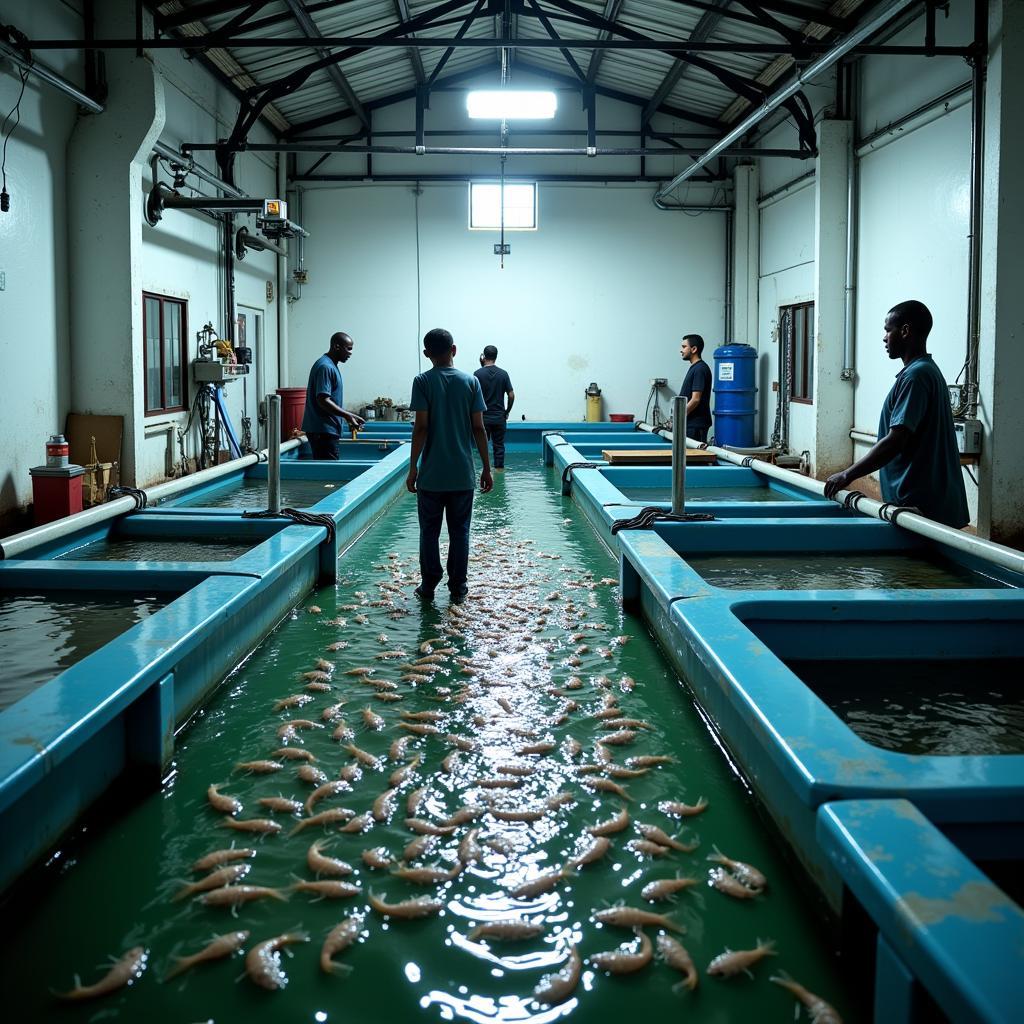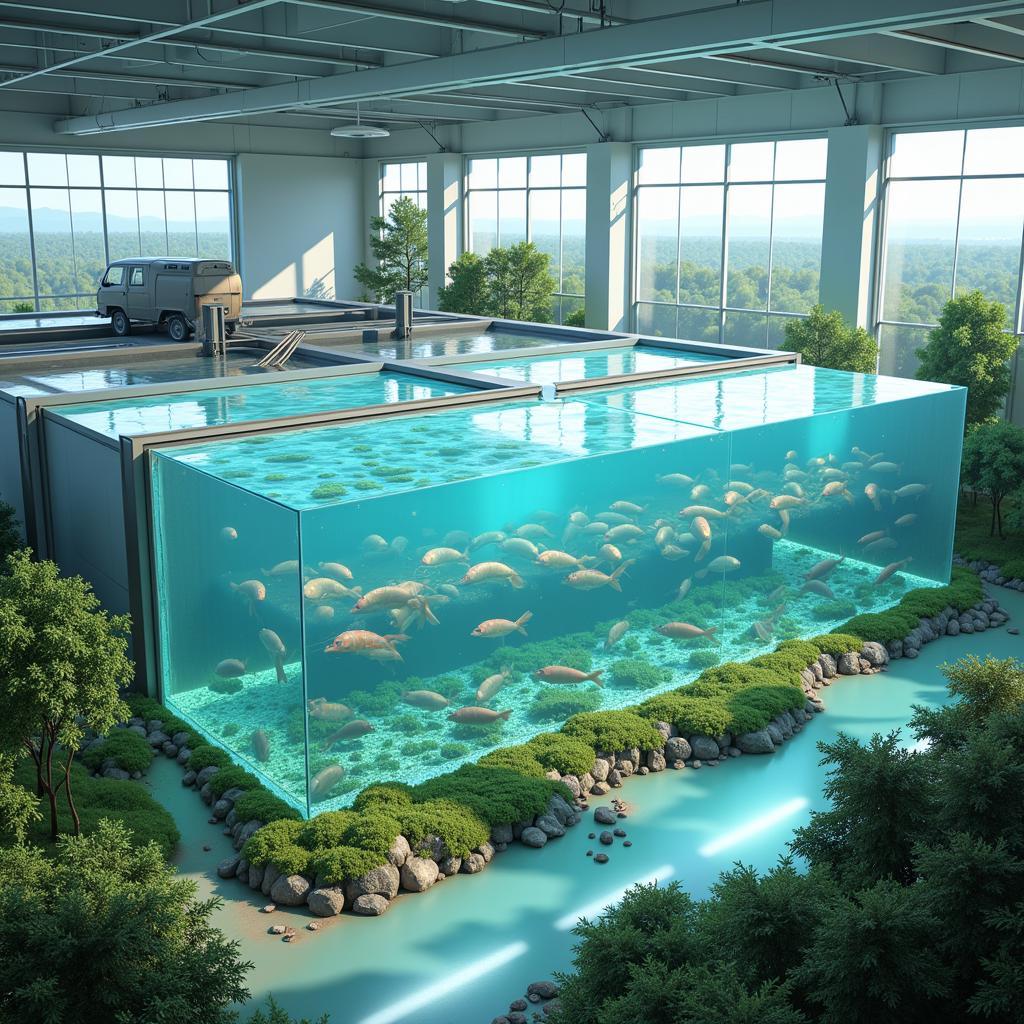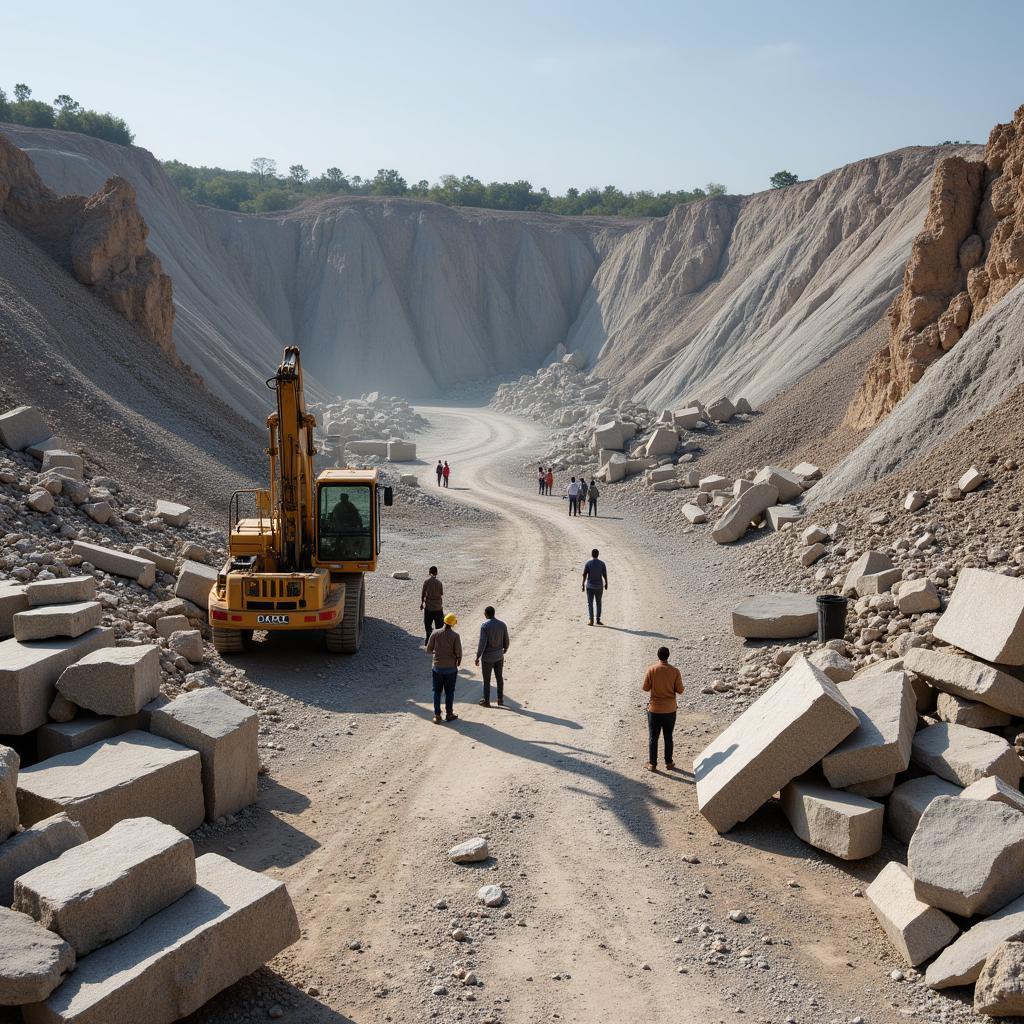African Indoor Aquaculture Shrimp Farming: A Comprehensive Guide
African Indoor Aquaculture Shrimp Farming is gaining traction as a sustainable and profitable venture. This guide explores the benefits, challenges, and best practices for successful indoor shrimp farming in Africa.
Why Indoor Shrimp Farming in Africa?
Indoor shrimp farming, also known as recirculating aquaculture systems (RAS), offers numerous advantages over traditional pond farming. It allows for greater control over water quality, temperature, and other environmental factors, resulting in higher yields and reduced disease risk. This controlled environment minimizes the impact on surrounding ecosystems, making it a more sustainable option.  Indoor Shrimp Farming in Africa Using RAS Technology Moreover, indoor systems can be located closer to urban centers, reducing transportation costs and providing fresher products to consumers. The consistent production cycle of indoor farming also allows for year-round harvests, providing a reliable income stream for farmers.
Indoor Shrimp Farming in Africa Using RAS Technology Moreover, indoor systems can be located closer to urban centers, reducing transportation costs and providing fresher products to consumers. The consistent production cycle of indoor farming also allows for year-round harvests, providing a reliable income stream for farmers.
Advantages of Indoor Shrimp Farming
- Higher yields: Controlled environments optimize growth conditions.
- Reduced disease risk: Biosecurity measures minimize disease outbreaks.
- Sustainable practice: Lower environmental impact compared to traditional methods.
- Year-round harvests: Consistent production ensures a steady income.
- Proximity to markets: Reduced transportation costs and fresher produce.
Setting up an Indoor Shrimp Farm in Africa
Setting up an indoor shrimp farm requires careful planning and investment. The initial costs can be higher than traditional pond farming, but the long-term returns can be significantly greater. Key considerations include:
Choosing the Right System
Several RAS designs are available, each with its own pros and cons. Selecting the right system depends on factors like available space, budget, and desired production scale. Researching and understanding the different options is crucial for making an informed decision.
Water Quality Management
Maintaining optimal water quality is essential for shrimp health and growth. Parameters like temperature, salinity, pH, and ammonia levels must be closely monitored and regulated. Investing in reliable water testing equipment and filtration systems is paramount.
Feeding and Nutrition
Providing a balanced and nutritious diet is crucial for maximizing shrimp growth and health. High-quality commercial feeds are readily available, formulated specifically for different shrimp species and growth stages.
Challenges and Solutions
While indoor shrimp farming offers significant advantages, it also presents challenges that need to be addressed.
High Initial Investment
The initial capital outlay for setting up an indoor system can be substantial. However, various financing options are available, including government grants and private investment.
Technical Expertise
Operating an indoor shrimp farm requires technical expertise in areas like water chemistry, system maintenance, and disease management. Training programs and partnerships with experienced professionals can help bridge this knowledge gap.
Power Supply
Reliable power supply is essential for running the various equipment in an indoor system. Investing in backup power generators can mitigate the risk of power outages.
The Future of African Indoor Aquaculture Shrimp Farming
African indoor aquaculture shrimp farming has the potential to revolutionize the seafood industry on the continent. It offers a sustainable and profitable alternative to traditional farming methods, contributing to food security and economic growth. By addressing the challenges and embracing innovation, African farmers can unlock the full potential of this promising industry.  The Future of Indoor Shrimp Farming in Africa
The Future of Indoor Shrimp Farming in Africa
“Investing in indoor shrimp farming is not just about producing shrimp; it’s about building a sustainable future for African communities,” says Dr. Abasi Kioko, a leading aquaculture expert based in Kenya.
“With the right knowledge and support, African farmers can become global leaders in sustainable shrimp production,” adds Dr. Fatima Mbaye, a Senegalese marine biologist specializing in aquaculture systems.
Conclusion
African indoor aquaculture shrimp farming offers a promising path towards sustainable and profitable seafood production. By understanding the key considerations, addressing the challenges, and embracing innovation, African farmers can play a significant role in meeting the growing global demand for shrimp. The potential for economic growth and food security makes indoor shrimp farming a compelling opportunity for Africa.
FAQ
- What are the main benefits of indoor shrimp farming?
- What are the initial costs involved in setting up an indoor shrimp farm?
- What are the key challenges of indoor shrimp farming in Africa?
- What kind of technical expertise is needed for indoor shrimp farming?
- What are the different types of RAS systems available?
- What are the financing options for setting up an indoor shrimp farm?
- How can I get training in indoor shrimp farming techniques?
For support, please contact us at Phone: +255768904061, Email: [email protected], or visit our address: Mbarali DC Mawindi, Kangaga, Tanzania. We have a 24/7 customer support team.

